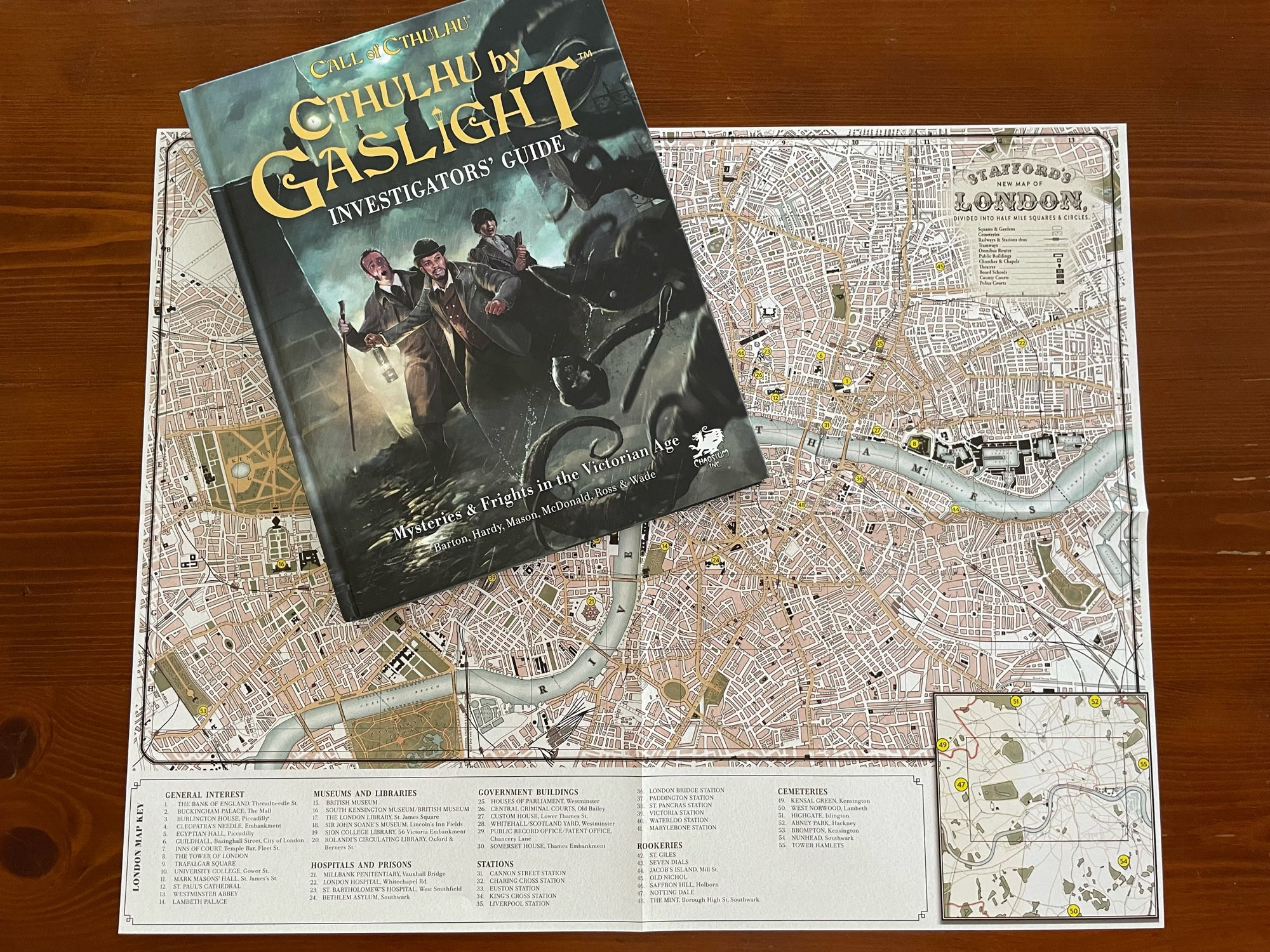Splitting a core book is a calculated risk. What information do the players need? What information is most important to the GM. In the case of Cthulhu By Gaslight Keeper’s Guide, the split focus on things like NPC stats for historical figures, information on Mythos beasties and forbidden tomes and a pair of adventures to get players wrapped up in the dark side of the Victorian era. Chaosium provided a copy of the book for this review. Does this book round out a new era in Cthulhu gaming? Let’s play to find out.
The first section of the book dives into the mundane threats and consequences of being an investigator. There’s a brief primer on police proceedings for when players break the law and a short discussion of asylums and their awful conditions. The section ends with some maps and a chat about threats within the poorer sections of London. Cultists might hang out in a rookery but they might be the least of everyone’s problems. I would have liked a little more discussion about asylums and the, at the time, wild new technology of psychoanalysis given how much of Cthulhu Mythos games focuses on the loss of sanity. But the rest of what’s here is a good basis for Keepers to do their own research should they wish for more detail.
The book then delves into the occult side of things. Secret societies were detailed in the Cthulhu By Gaslight Investigator’s Guide but here there’s discussion about whether or not they hide true magical power. The Victorian era was rife with occult movements like mediums and organizations like The Golden Dawn. It’s up to the Keeper to decide if they were on to something or if it was all charlatans and dress up. If there’s real magic within the cigar choked walls, this section contains details on available spells and travel on the astral plane.
The book also touches on many of the historical personalities mentioned in the other book. If you’ve ever wanted character statistics for Madam Blavatsky, your time has come. Many of the writeups also contain short entries suggesting ways to connect the person to the mythos. They could be unexpected allies, secret cultists or potential victims that players have to take action to cover up their true deaths with the ones we know from history. Playing with these details is one of the things I like the most about historical games. If you’re going to be in Victorian London, don’t you want to meet Queen Victoria?
Or, for that matter, Count Dracula? As the book transitions over to the monsters and the Mythos, it contains a section featuring famous fictitious characters. That includes Dracula, Dr. Jekyll and Captain Nemo. Including these characters would be a question I would probably ask in a session zero. Some players might like being able to outwit these characters. Others might suggest playing Castle Falkenstein instead. Though strangely, both Sherlock Holmes and his real life creator are absent from these sections.
The book wraps up with a pair of adventures. I won’t get too deep into spoilers but one is set in a country manor and the other is set in the depths of London’s poorer neighborhoods. The country house episode feels more like a lighter entry into a Call of Cthulhu campaign with a lot of secrets to uncover, red herrings to expose and other drawing room mystery business before discovering the truth behind the monster. The second adventure seems like it's geared towards experienced investigators dealing with a new mythos entity.
Bottom line: Cthulhu By Gaslight Keeper’s Guide gives plenty of challenges both mundane and Mythos for investigators in the Gaslight Era.


